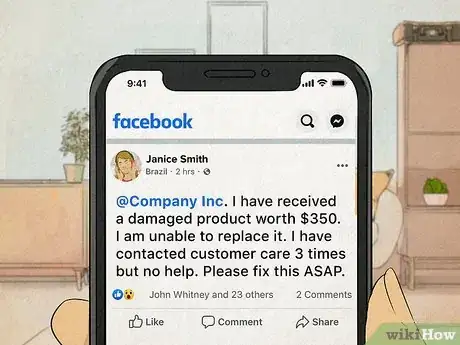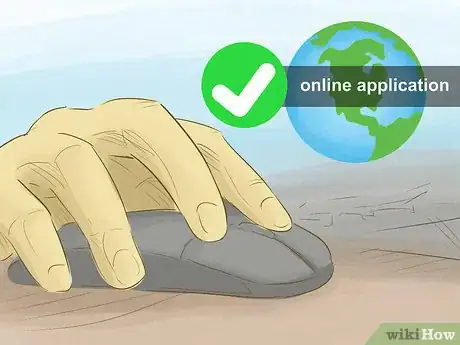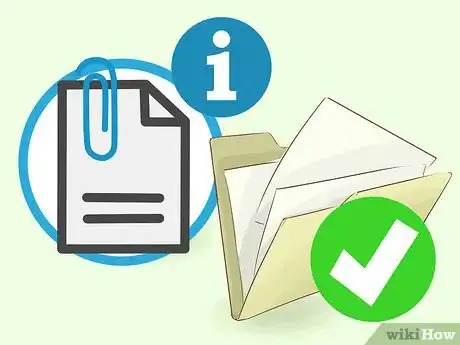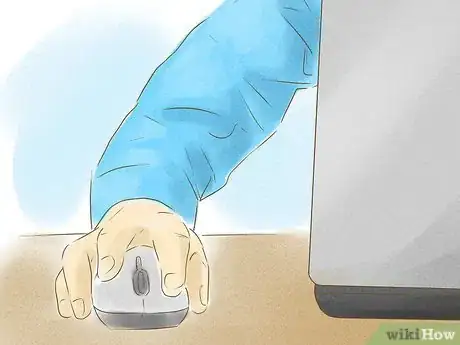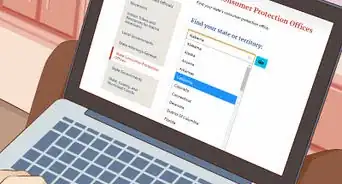This article was written by Jennifer Mueller, JD. Jennifer Mueller is an in-house legal expert at wikiHow. Jennifer reviews, fact-checks, and evaluates wikiHow's legal content to ensure thoroughness and accuracy. She received her JD from Indiana University Maurer School of Law in 2006.
There are 8 references cited in this article, which can be found at the bottom of the page.
This article has been viewed 50,517 times.
When you have a problem or a dispute with a business, you may need to get others involved to resolve the issue. Start small, and try to work out the issue directly with the manager or owner first. If that doesn't work, move on to local government departments or licensing agencies that have authority over the business. You can also report the business to other consumers directly by using the internet and other forms of media.[1]
Steps
Making a Public Complaint
-
1Post reviews on social media. Your own social media accounts, as well as consumer review sites such as Yelp, provide ways for you to report a business to friends and family as well as the public at large. Since businesses often monitor social media and review sites, this can be a good way to get results.[2]
- Include specific details in your posts, and try to stick to the facts. Avoid insulting the business or the people who work there. Instead focus on the problem you have and how you would like to see that problem remedied.
- Post photos if that supports your claims. For example, if you want to report a pizza restaurant for delivering a poor-quality pizza, you might take a picture of the pizza and post it on social media with a description. Remember to tag the restaurant.
-
2Tell your story to a consumer advocacy website or organization. There are a number of consumer advocacy websites, such as Consumer Reports, that take stories from readers about poor customer service experiences they've had with businesses.[3]
- You can also find nonprofit organizations that fight for consumer rights. Look for these organizations and their websites by doing an online search for "consumer advocacy" or "consumer rights." Add the name of your city or state if you want more local results.
Advertisement -
3File a complaint with the Better Business Bureau (BBB). The BBB is a private organization that accepts and investigates complaints about businesses. Provided your complaint is consistent with the BBB's criteria, they will contact the business and work to get the issue resolved to your satisfaction.[4]
- To start a complaint to the BBB online, go to https://www.bbb.org/consumer-complaints/file-a-complaint/get-started. Read the acceptance criteria to make sure your complaint qualifies, then click the button at the bottom of the page to get started.
- BBB complaints are public, so by reporting a business to the BBB you also put the rest of the public on notice about the issue you report.
-
4Send a tip to your local news station. Many local news stations have investigative reporting teams that investigate consumer complaints about local businesses. You can usually find a tip form on the news station's website. They also may have a local or toll-free number you can call to provide your tip.[5]
- Tips to local news stations typically can be made anonymously. However, your report may be taken more seriously if you give them a name and contact information so they can follow up with you to get more details about the dispute or issue. You can always decline to appear on air or have your name used publicly.
Reporting to State or Local Government
-
1Identify the appropriate government department. You may need a different state or local government department depending on the type of business you want to report and the subject of your dispute.[6]
- If you're unsure which department to use, look for a local consumer affairs agency. You can tell them what you want to report and they'll direct you to the correct government department.
- For example, if you wanted to report unsanitary conditions at a restaurant, you would want to report to your local health and sanitation board.
- If you're reporting a professional business, you typically would file a complaint with the licensing board that oversees that particular profession. For example, if you had a dispute with a contractor who remodeled your home, you would file a report with the construction contractors licensing board.
-
2Find or create a complaint form. Most government departments and agencies have a specific form you need to fill out if you want to report a business. Check the department's website or call a local office to find out if there's a specific form you should use.[7]
- If you can't locate a form, you can always send a formal business letter with details of your report. If you're writing a letter, include your contact information as well as the name and contact information of the business.
-
3Describe the problem in detail. Provide a chronological account of what happened, including dates and approximate times. Explain any efforts you've made to resolve the situation before filing the report, including names of managers or staff at the business who worked with you.[8]
- Include a description of any particular result you want from the department or agency, such as a refund of your purchase price.
-
4Submit your report online. Particularly if you live in a larger metropolitan area, you can probably fill out and submit a report about a business online from the government department's website. You may not even have to talk to anyone at the department.[9]
- If you submit your report online, make a copy of it before you send it for your records.
- You may be able to attach documents that support the claims in your report. If you're not able to do this, or if you don't have digital copies of the documents you need, simply mention in your report the documents that you have.
-
5Mail your report if you are including documentation. Some state and local government departments prefer that you mail your report if you have documents that support the claims in your report. If you're unsure, you can always call the department and ask how they'd prefer to receive your report.[10]
- Make copies of anything you want to send along with your report and send the copies, not the originals. Keep the originals for your records.
- Before you send your report, make a copy of everything you're sending and keep it together for your records. That way you'll know in the future exactly what you sent to the department.
-
6Follow up with any government investigation. Once the government agency or department receives your report, it will be assigned to a staff member for review. If they decide to investigate the business based on your report, they may contact you.[11]
- If you don't hear from the agency or department within a couple of weeks, you may want to call the office to get a status update on your report.
Reporting to the Federal Government
-
1Attempt to resolve the issue with the business owner. You should consider reporting a business to the federal government a last resort. Federal agencies typically don't do anything to resolve individual complaints.[12]
- Make at least one attempt to resolve the issue in writing, so that you have proof of your attempts to resolve the issue (and the business's response) that you can submit with your report.
- Send a formal business letter using certified mail with return receipt requested, so you have proof that the business owner received your letter. This is important if you never get any response back from the business, because they may try to say they never got it.
-
2Gather documents and information related to the problem. When you prepare to report a business to the federal government, pull together as much evidence as you can find of the problem you've had with the business.[13]
- It can be helpful to do a little research into the various government agencies that take consumer complaints, so you know what they have control over and what kind of complaints they take.
- Start at https://www.usa.gov/consumer-complaints. There, you'll find information about reporting a business to the federal government and the types of complaints or reports that federal agencies typically take.
-
3File a complaint with the Federal Trade Commission (FTC). The FTC primarily handles reports of businesses engaged in fraudulent or deceptive practices, such as unwanted telemarketers or scam artists.[14]
- To file a complaint with the FTC, visit the FTC Complaint Assistant at www.ftccomplaintassistant.gov. Choose the category that best suits your complaint to get started filing your complaint online.
- You can also file a complaint with the FTC by calling 1-877-FTC-HELP.
- The FTC does not resolve individual complaints, but they may investigate the situation. If the business is contacted by the FTC, they may reach out to you with a compromise.
-
4Submit complaints about financial products or services to the Consumer Financial Protection Bureau (CFPB). The CFPB is a US government agency that helps resolve any problems you may have with a bank, lender, or financial services company. The CFPB will work with you and the business to resolve the situation.[15]
- You can start a complaint with the CFPB online at https://www.consumerfinance.gov/complaint/. The bureau will review your report and may address it directly, or forward it to another agency that is better able to assist you.
- When you file a report you'll be instructed to set up an account. You can log on to your account at any time to check the status of your complaint.
References
- ↑ https://www.usa.gov/consumer-complaints
- ↑ https://money.usnews.com/money/personal-finance/articles/2012/07/24/the-3-best-places-to-complain-about-a-company
- ↑ https://money.usnews.com/money/personal-finance/articles/2012/07/24/the-3-best-places-to-complain-about-a-company
- ↑ https://www.bbb.org/consumer-complaints/file-a-complaint/get-started
- ↑ https://www.nbcdfw.com/news/local/NBC-5-Responds-Answers-Your-Consumer-Complaints-378814381.html
- ↑ https://www.usa.gov/consumer-complaints
- ↑ http://www.hillsboroughcounty.org/en/residents/citizens/consumer-issues/action-folder/report-a-complaint-against-a-business
- ↑ http://www.hillsboroughcounty.org/en/residents/citizens/consumer-issues/action-folder/report-a-complaint-against-a-business
- ↑ http://www.hillsboroughcounty.org/en/residents/citizens/consumer-issues/action-folder/report-a-complaint-against-a-business
- ↑ https://oag.ca.gov/contact/consumer-complaint-against-business-or-company
- ↑ http://www.hillsboroughcounty.org/en/residents/citizens/consumer-issues/action-folder/report-a-complaint-against-a-business
- ↑ https://www.usa.gov/consumer-complaints
- ↑ https://www.usa.gov/consumer-complaints
- ↑ https://www.ftccomplaintassistant.gov/#crnt&panel1-1
- ↑ https://www.consumerfinance.gov/complaint/process/
